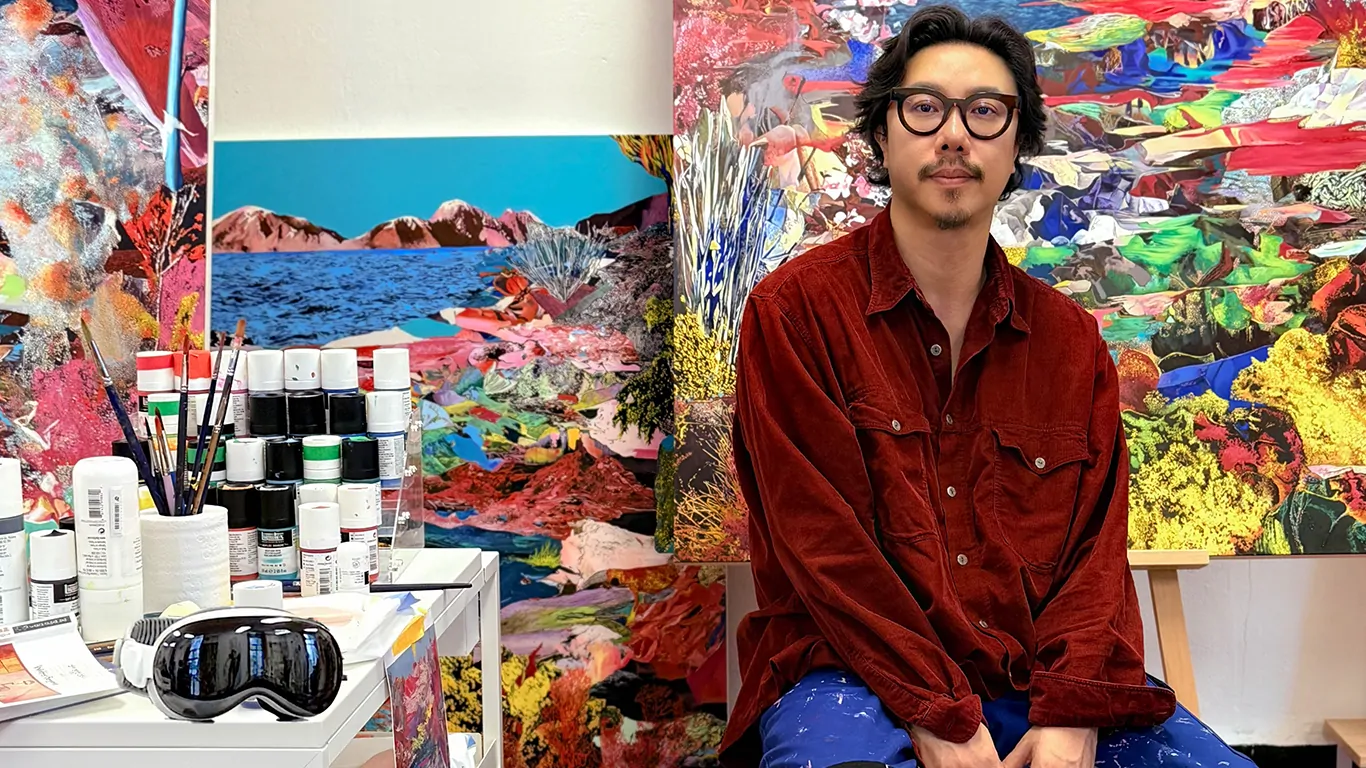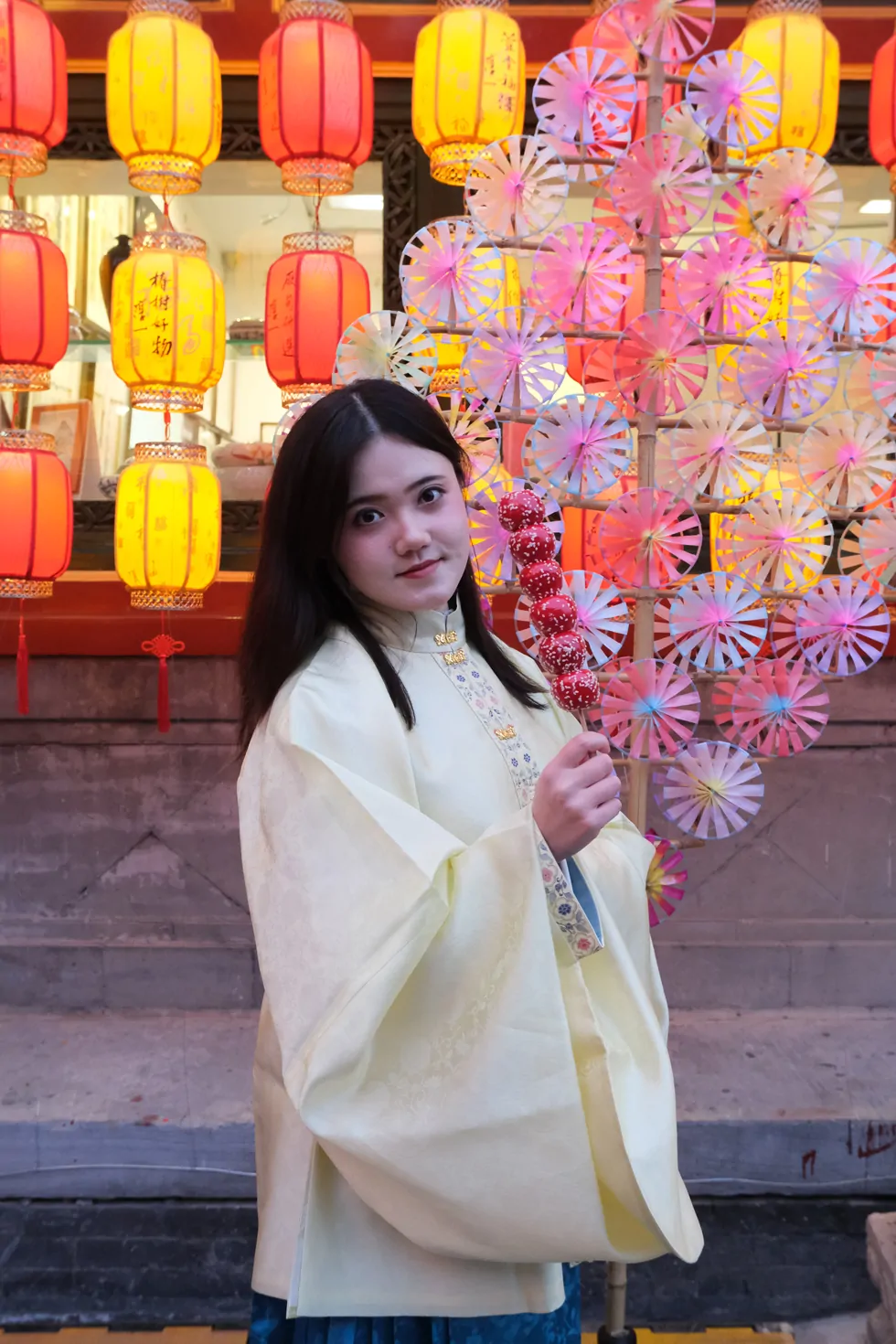Jinjoon Lee, the Korean artist-professor at KAIST, fuses AI, ecology, and myth to create immersive experiences that blur the line between human imagination and machine perception.
Jinjoon Lee (이진준) is a leading figure in contemporary Korean media art, whose work situates itself at the threshold between the natural and the artificial, the analogue and the digital. Born in Masan, South Korea, Lee now holds a professorship at KAIST, serving as an associate professor in the Art & Design discipline, as well as founding director of the KAIST Art and Technology Centre.
Lee’s academic journey is emblematic of his transdisciplinary approach. He earned degrees in both arts and design: a BFA and MFA from Seoul National University, followed by a master’s at the Royal College of Art and a PhD in Fine Art from Oxford’s Ruskin School. His recognition extends beyond Korea — he is a Fellow of the Royal Society of Arts (FRSA) and a member of the Royal Society of Sculptors.
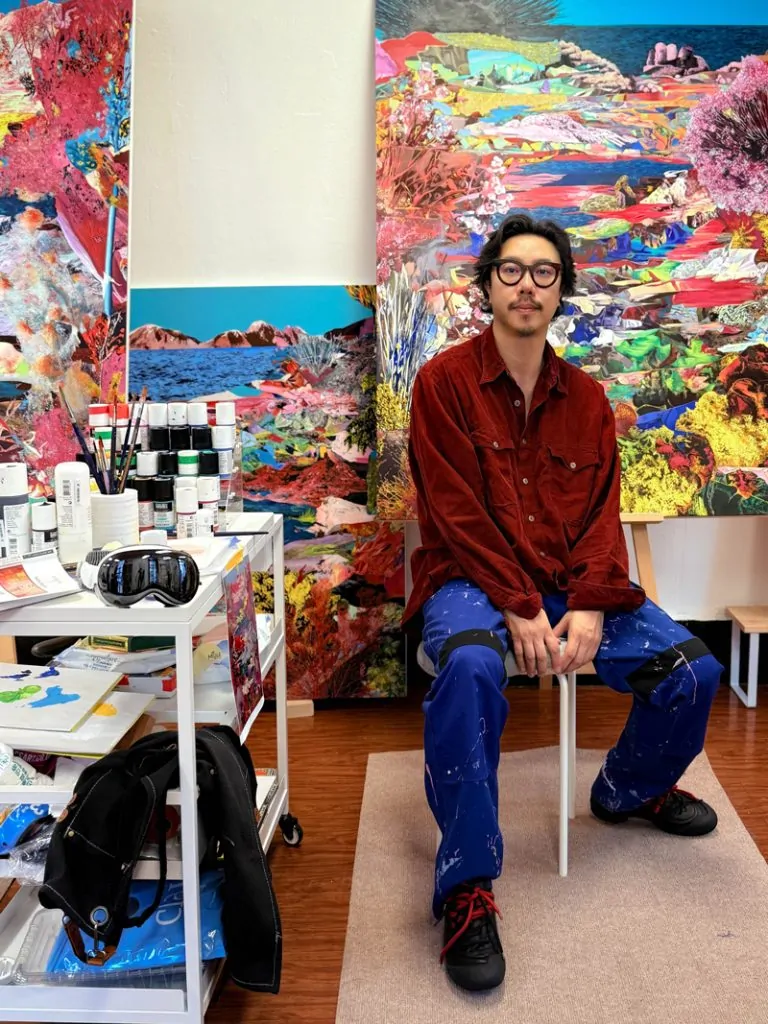
Courtesy of Jinjoon Lee Studio
(Photo by Sun Kim © Jinjoon Lee Studio)
The idea of a “media symphony” has been a long-standing vision of mine—a form of performance that brings together all the elements of contemporary media art into a single, unified experience.
Jinjoon Lee
At the core of Lee’s creative practice lies an interest in liminality — in threshold states between presence and absence, memory and forgetting, and in what he terms the “liminoid experience” of utopian spatial ideologies. His works often merge immersive technologies — e.g. game engines, AI algorithms, projection mapping, biofeedback systems — with motifs drawn from ecological thinking, East Asian aesthetics, and speculative philosophy.
His recent projects illustrate this hybridity. In Good Morning, Mr. G-Dragon (2025), Lee collaborated with the “King of K-pop” G-Dragon to transmit generative AI audio-visual content into outer space, using biometric data and satellite transmission. His latest large-scale project, Cine-Forest: Awakening Bloom, transforms Bundang Central Park into an AI-driven open-air theatre, blending a live orchestra, a 1,000-person choir, AI-generated harmonies, and environmental data to create a “media symphony” of forest, city, and audience. Meanwhile, Audible Garden (2023) reinterprets traditional East Asian garden philosophy through sound, architecture, and interactivity.
Across media and formats, Lee’s work invites viewers into contemplative, hybrid spaces that challenge conventional distinctions between human and machine, memory and speculation, nature and construction. His practice embarks from a deeply humanistic inquiry — yet remains agile in its adoption of cutting-edge media — making Jinjoon Lee one of the most vital voices in contemporary art at the intersection of technology and poetics.
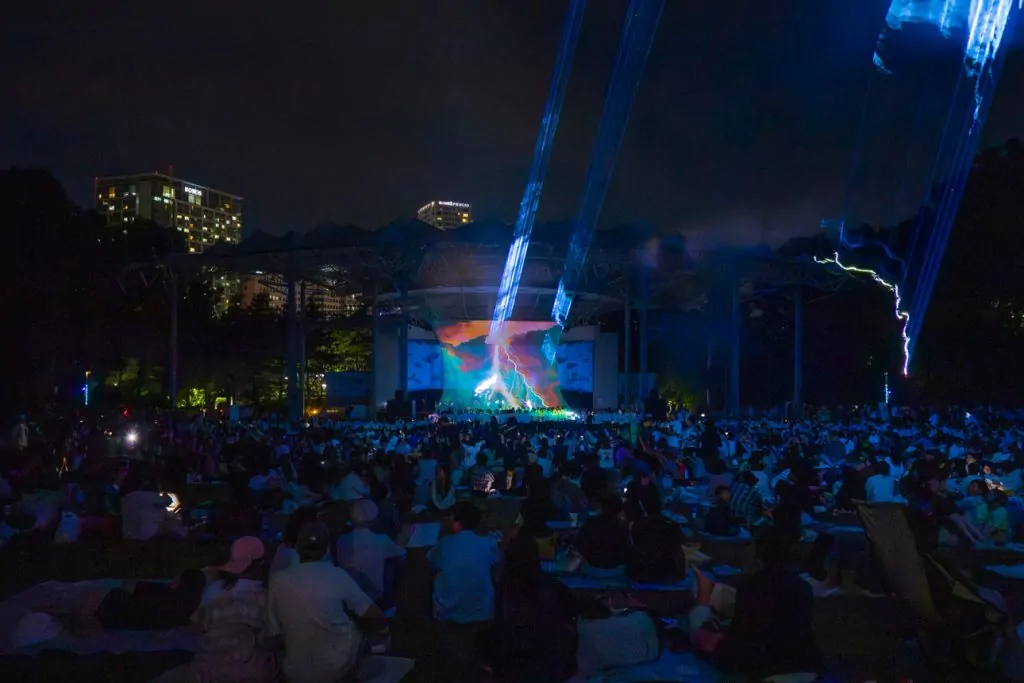
(Photo by SIM JI HYUN © Jinjoon Lee Studio)
Cine-Forest: Awakening Bloom is described as a “living media symphony.” What first inspired you to merge myth, ecology, and AI into this format?
JinJoon Lee: The idea of a “media symphony” has been a long-standing vision of mine—a form of performance that brings together all the elements of contemporary media art into a single, unified experience. I see it as the direction that media art should ultimately move toward.
My inspiration comes from the concept of Gesamtkunstwerk, a concept from Wagner, where sound, space, visual imagery, and tactile sensations merge to create a moment that exists only in the here and now. In Cine-Forest: Awakening Bloom, myth, ecology, and AI converge within this framework to form what I call a “media symphony.”
To achieve this kind of totality, we must weave together diverse forms of knowledge—science, technology, art, music, literature, and the humanities. This performance uses advanced tools such as AI, VR, and projection mapping, but these are not ends in themselves; rather, they are part of a larger effort to design an ephemeral performativity—a temporary yet profound experience that transcends the boundaries of time and space. By integrating ancient myth with ecological realities and cutting-edge AI, Cine-Forest reflects my belief that technology and human imagination can coexist organically to create new cultural narratives.
The performance is rooted in the legend of “a giant who became a star.” Why was this story important to you, and how does it resonate with today’s urban and ecological realities?
The story of “a giant who became stars” reflects a deep longing for innocence and hope that many have lost in today’s fast-paced, hyper-accelerated world. In the tale, the giant shares his starlight with the isolated citizens of the city who have lost the light in their eyes, until he himself is ultimately punished and transformed into stars.
I chose to root the performance in this familiar fairy-tale form for two reasons. First, Bundang Central Park is a place where many families gather, and I wanted to create a story that would resonate with audiences of all ages. More importantly, I felt it was vital to tell a story that speaks honestly about what truly matters. In an era of overwhelming AI technologies and rapid change, it is easy to forget the fundamental values of human life—kindness, connection, and hope.
By weaving this simple yet profound narrative into the performance, my aim was to remind people that even amid the spectacle of advanced technology, our most essential dreams and ideals remain constant. The giant who became stars is a metaphor for this enduring light within us and a call to reimagine our cities and our relationship with nature.
You often describe your practice as creating “liminoid experiences.” How does this project expand that idea?
JinJoon Lee: My work has long focused on creating liminoid experiences—spaces that blur the boundaries between reality and imagination, everyday life and artistic transformation. In Cine-Forest: Awakening Bloom, this idea is expanded on an unprecedented scale.
By combining original compositions I wrote, arrangements by human composers, AI-assisted symphonies, live orchestral music, local citizen participation, AI-generated voices, and the natural sounds of grass, insects, and wind alongside the forest itself, Cine-Forest becomes a temporary yet profound realm. This multi-layered soundscape—featuring a 70-piece orchestra, a 1,000-member citizen choir with AI agents, and variations on iconic film soundtracks interwoven with field recordings from the forest—creates a truly immersive soundscape. Here, technology is not a separate layer imposed on nature, but something that organically coexists with it, allowing people to experience a moment of harmony that is everywhere and nowhere at once. In this way, the project extends my practice by offering a total, collective experience that reimagines how we inhabit both digital and physical worlds.
The work deploys 16 ultra-high-resolution projectors, 3D Gaussian Splatting, AI-assisted voice augmentation, and environmental sensors. Which technical element was most challenging, and which surprised you most in how it shaped the performance?
During the preparation stage, the most challenging technical task was accurately combining and mapping all the data of the forest to create a seamless projection. Because every tree, leaf, and contour of the terrain had to be captured “as is,” this required a level of precision and coordination that was incredibly complex. Advanced 3D Gaussian splatting technology, along with VR-based simulations, was employed to digitally reconstruct the forest.
However, once the performance began, I realized that what truly shapes the atmosphere and meaning of Cine-Forest: Awakening Bloom goes beyond technology. The presence of the audience and the natural elements, like the weather, became the most decisive factors.
During the event, we experienced two days of continuous rain, which was difficult both for our team and for the visitors. Yet, in a poetic way, the rain felt connected to the story itself—as if the giant in our tale was sharing his starlight with us like falling rain. The live sound arrangements were adapted in real time to reflect the rainy conditions, with these shifts embraced as part of the performance itself. This unexpected harmony between the natural environment and the narrative reminded me that it is ultimately the interaction between nature, technology, and human experience that gives the performance its true life.
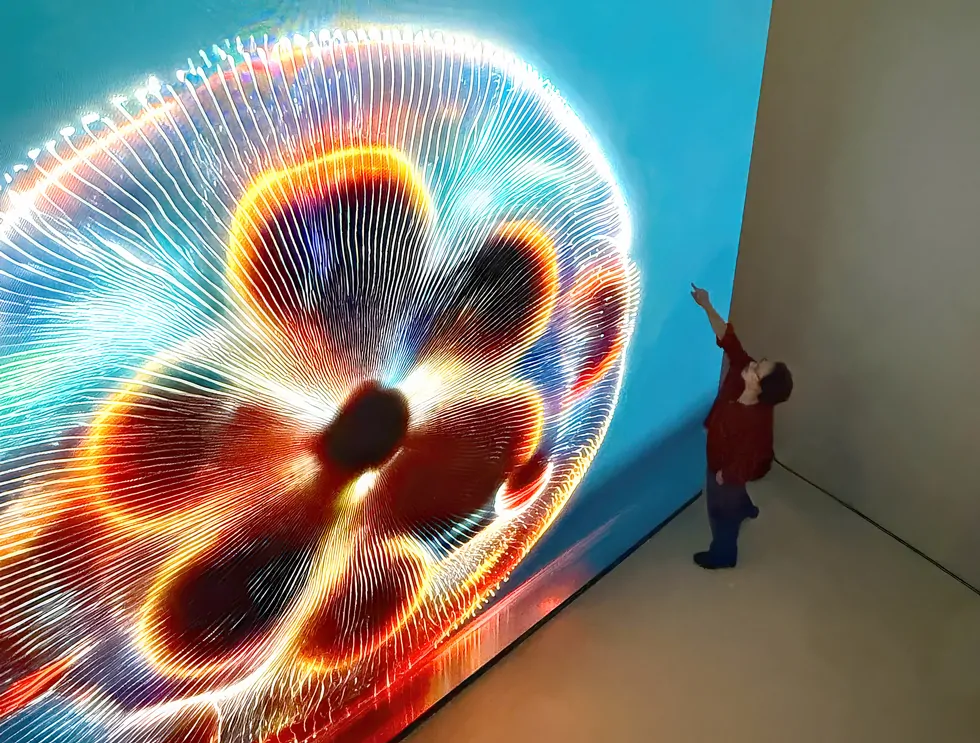
Champagne Supernova
© Jinjoon Lee Studio
You coined the idea of being a “data gardenist.” What does that mean in the context of Cine-Forest?
JinJoon Lee: The term “Data Gardenist” is one I created to describe a gardener who cultivates humans, nature, and technology on equal terms, moving beyond the traditional human–nature divide. In Cine-Forest: Awakening Bloom, this concept comes to life as data is not merely collected or displayed, but carefully nurtured and woven into a spatial experience—a multisensory in-between space where perception intersects with data-driven systems.
Just as a gardener tends to a diverse garden, I work with data to create an environment where technology and nature can organically coexist. In this performance, AI, sensors, and projection mapping interact with the breath of the forest, the footsteps of the audience, and the rhythms of the city. It is not about using technology as a superficial spectacle, but about cultivating a shared space of imagination—a kind of “digital utopia” inspired by East Asian ideals of harmony. In this way, the Cine-Forest becomes a place that is everywhere and nowhere, inviting people to reflect on our evolving relationship with technology and the living world.
If someone has never experienced media art before, what do you hope they feel when they walk through Cine-Forest?
JinJoon Lee: If someone is experiencing media art for the very first time, I hope Cine-Forest: Awakening Bloom will awaken their senses and spark a feeling of wonder. This performance is not simply something to watch, but a space to walk through, breathe in, and become a part of. As the forest transforms into a vast open-air theatre, every rustle of leaves, every breath of wind, and every human step merges with light, sound, and song to create a living artwork.
I want audiences to feel as though the familiar everyday space around them has turned magical and unfamiliar—like stepping into a dream where nature, technology, and humanity are seamlessly connected. Above all, my hope is that they will realize that this stage is completed not by technology alone, but by their own presence and participation. In this way, each person becomes both a spectator and a co-creator, leaving with a deeper sense of connection to the world around them.
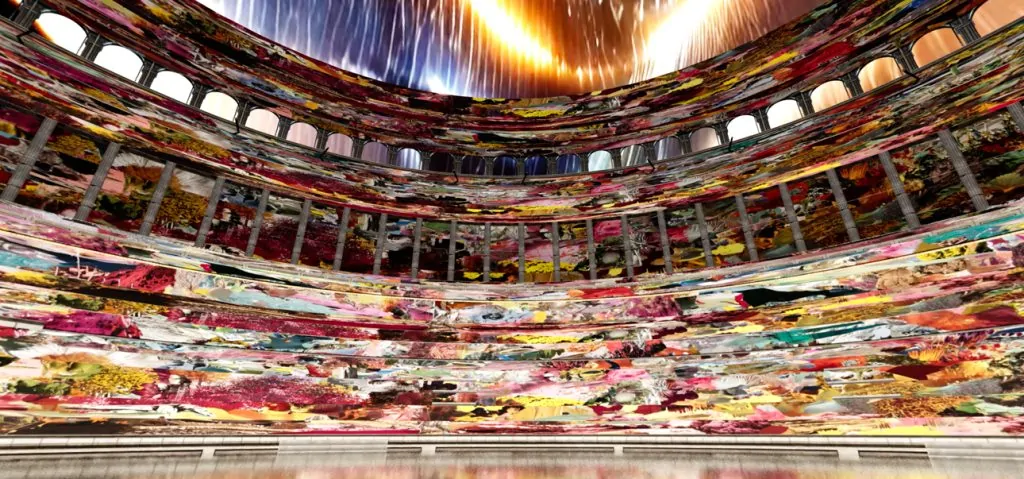
Mnemosyne Theatre
© Jinjoon Lee Studio
Question for your future directions: You’ll be in dialogue with anthropologist Biao Xiang on AI and humanity. What questions are most urgent for you at this intersection?
JinJoon Lee: For me, the most urgent question is how we can engage with AI in a way that strengthens, rather than diminishes, our capacity for critical thinking and creativity. In my dialogue with Professor Biao Xiang, we explored how AI can serve as a tool for reflection and imagination, rather than becoming something we passively depend on. Ultimately, I am interested in how AI and humanity can co-evolve through a deeply humanistic and critically engaged approach.
In this context, the distinction between a media user and a media artist lies in recognizing the moment when technology is elevated into art. The more advanced the technology, the more seamlessly it should recede from view; only in its invisibility can art fully emerge. Such an outcome demands a high degree of refinement, for the aim is not to present a technical demonstration, but to create an experience in which audiences encounter a new form of art.
©2025 JinJoon Lee
Ashley, a graduate of the London School of Economics with degrees in Philosophy, Economics, and Economic History, explores the intersections of art, history, philosophy, and technology. She examines how historical narratives shape visual culture, how philosophical ideas manifest in art, and how emerging technologies like AI and blockchain redefine its creation and ownership.


